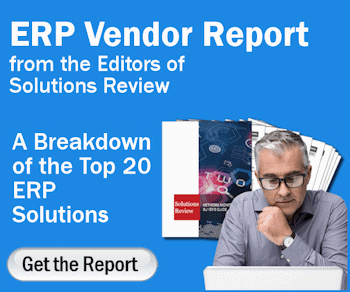A Three-Tiered AI-First Approach to Transform Finance in Manufacturing


Lavi Sharma from Genpact outlines the value that a three-tiered, AI-first approach to finance in manufacturing can provide. This article originally appeared in Insight Jam, an enterprise IT community that enables human conversation on AI.
 Thanks to cutting-edge advanced technologies, including agentic AI, the manufacturing landscape is changing fast. From autonomous warehouses that run like clockwork to touchless production plants and intelligent AI agents empowering defect detection systems, AI isn’t just improving processes; it’s accelerating time to value, scaling operations, and setting the bar high for companies to redefine customer experience.
Thanks to cutting-edge advanced technologies, including agentic AI, the manufacturing landscape is changing fast. From autonomous warehouses that run like clockwork to touchless production plants and intelligent AI agents empowering defect detection systems, AI isn’t just improving processes; it’s accelerating time to value, scaling operations, and setting the bar high for companies to redefine customer experience.
As manufacturers embrace the principles of Industry 4.0 and the Internet of Things (IoT), a new revolution is quietly gaining momentum—Industry 5.0. This emerging vision goes beyond automation, advocating a harmonious collaboration between humans and advanced technologies to create a sustainable, resilient business model. These innovations are setting new standards in precision, scalability, and efficiency and reshaping the future of manufacturing as we know it.
In my conversations with clients, I often discover that even though CFOs play a key role in shaping business strategy, financial planning, and accounting operations, the manufacturing industry hasn’t prioritized finance and accounting (F&A) transformation. Why? Most manufacturing companies have grown by acquisition, inheriting diverse technology landscapes that often use fragmented legacy systems that require significant manual efforts.
The solution? Shift from a lean manufacturing mindset to an AI-first approach.
An AI-first approach requires a systematic ecosystem shift, not a set of incremental changes. Just as the invention of electricity completely changed society, industries, and lives, so will AI-first transform how we operate.
So, how can you reimagine every end-to-end process within manufacturers’ F&A functions? A three-tiered adoption approach is necessary—empowering the workforce, augmenting operations, and using AI to power finance solutions.
1) Build an AI-empowered finance workforce
At a granular level, AI can act as the fuel that supercharges finance teams to gain insights through knowledge management systems and be an intelligent assistant to accountants. For example, AI has the potential to enable transaction matching for voluminous inventory reconciliation with greater speed and precision than humans.
You can use gen AI-powered virtual assistants to provide next best action recommendations to team members, enabling synchronized actions across finance, supply chain, and sales teams—all in real-time. It’s like having a subject matter expert available 24/7 to help resolve contextual queries, improve data consistency, and quality.
2) Enable AI-augmented finance operations
Focusing on driving last-mile automation offers organizations better insights, improves visibility, and increases processing speed. Agentic action-enabled tools that run on AI models can perform tasks independently, take actions, and solve complex problems, thereby enabling autonomous processing.
For example, when leveraged within an accounts payable (AP) finance function, you can use agentic AI to analyze the sentiment and tone of a vendor’s emails and chat conversations. It can help extract data from enterprise resource planning and AP platforms, map it to the vendor’s query, and draft an appropriate response.
Generating proactive email responses with adjustable levels of courtesy can minimize delays, resolve conflicts, and close pending payments. This way, finance professionals can avoid frequent credit hold situations and reduce turnaround time.
3) Design AI-powered finance solutions
Specialized finance AI solutions are game changers. Whether they use AI-driven journal entry automation, transaction matching, anomaly detection, or third-party risk management solutions, the technology can streamline F&A operations.
I’ve seen how well customized AI solutions work in this area. Some of the world’s largest companies have invested in developing finance data fabrics to generate real-time and on-demand predictive insights that support decision-making with recommended next-best actions—all through a single source of truth.
Armed with a suite of analytics solutions to streamline auditing and reporting processes and improve user experiences with personalized insights to drive actions, users report a reduction in manual efforts by more than 50 percent and up to 40 percent improvement in their insight-to-action journey.
Build a robust finance organization that runs on AI
Implementing AI requires a clear strategy, organizational flexibility, a data-driven environment, and team collaboration.
Reality check: your AI models are as good as your data. One way to get your AI models to churn out near-accurate results is by integrating data intelligence platforms. These solve many challenges by breaking the barriers of siloed data across supply chain, financial planning, tax, and treasury, and providing one central platform with necessary data management and governance.
This way, you can empower teams to quickly understand and reconcile trends, patterns, and behaviors and trust AI-driven insights to make confident decisions.
As front-end functions in manufacturing have embraced AI, it’s time for accounting and finance to follow a similar path. As AI becomes more sophisticated, it’s poised to transform the financial world and the role of finance teams to make way for autonomous and predictive operations.



















